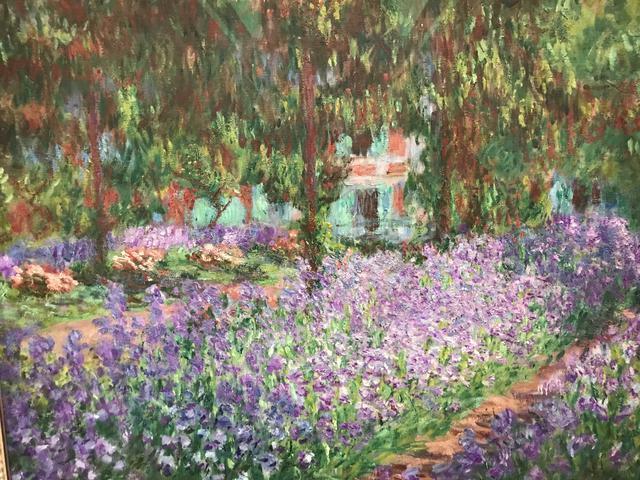The artist's garden in Giverny - The artist's garden in Giverny

The artist's garden in Giverny is a masterpiece created by the renowned French painter Claude Monet. This oil painting on canvas, completed in 1902, showcases Monet's deep connection to nature and his ability to capture the essence of a place through his art. With dimensions of 816 x 926 centimeters, the painting immerses viewers in Monet's personal Eden, his beloved garden in Giverny.
Monet's obsession with landscapes is evident in this work, as he meticulously depicts the blooming lilacs and carefully arranges the flowers to create a harmonious composition. The artist's attention to detail is remarkable, as he even went as far as to remove trees from the garden to enhance the overall aesthetic of the scene. This level of dedication and precision is characteristic of Monet's later works, as he moved away from the Impressionist style and focused more on capturing the beauty of his surroundings in Normandy.
For Monet, painting was a way to express his inner emotions and connect with the world around him. The artist's garden in Giverny serves as a reflection of Monet's state of mind, showcasing his love for nature and his desire to create order amidst chaos. By arranging the elements in his garden according to his own specifications, Monet was able to achieve a sense of harmony and tranquility that inspired many artists, including a number of Americans who came to live with him in Giverny.
The artist's garden in Giverny is not just a painting, but a window into Monet's soul and his deep connection to the natural world. Through his use of color and composition, Monet invites viewers to experience the beauty and serenity of his garden, allowing them to immerse themselves in his vision of paradise. This masterpiece continues to captivate audiences around the world, serving as a testament to Monet's enduring legacy as one of the greatest artists of all time.
© ChatGPT 3.5
Upon arriving in this town of Giverny, Monet was enchanted by the house that is portrayed in this painting. The first thing he did was rent it and then he ended up purchasing it for 22 thousand francs. It was here that Monet became the precursor of modern painting, first because he never tried to adapt to the trends of the time.
Monet's wife protested that the existing trees did not appear, but Monet explained to her that this was because the trees blocked the light from the flowers. In fact, Monet was a great lover of flowers and that is why his garden acquired the name extraordinary garden.
Monet's house is today the headquarters of the Claude Monet Foundation and can be visited during the months of April and November. Monet considered his garden to be his greatest work and therefore spent large amounts of money to make it this beautiful, which also caused him problems with his neighbors at the time. After Mont Saint-Michel, Monet's house is the second most visited attraction in Normandy, although photos are not allowed inside Monet's house, everything is through postcards.